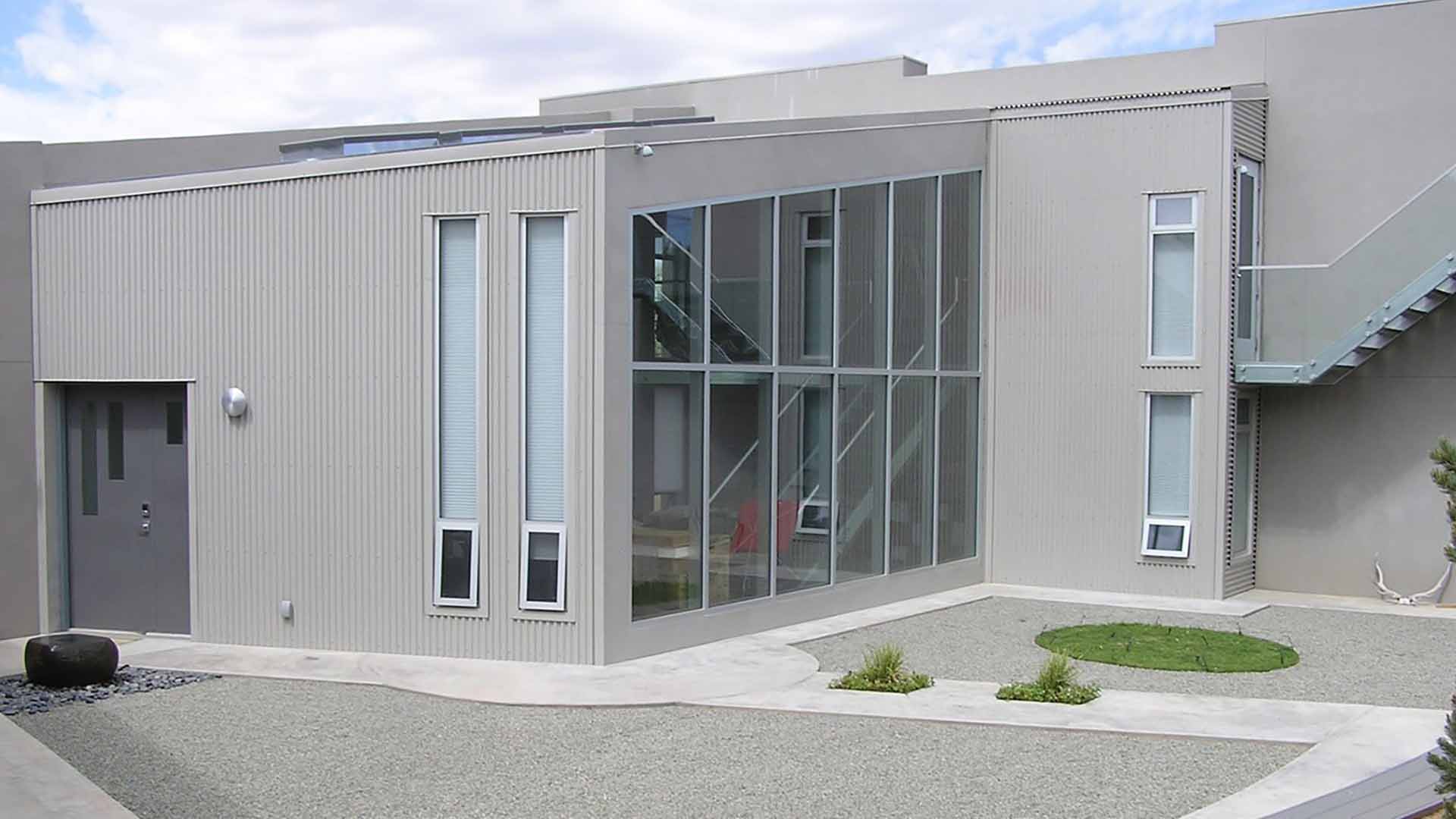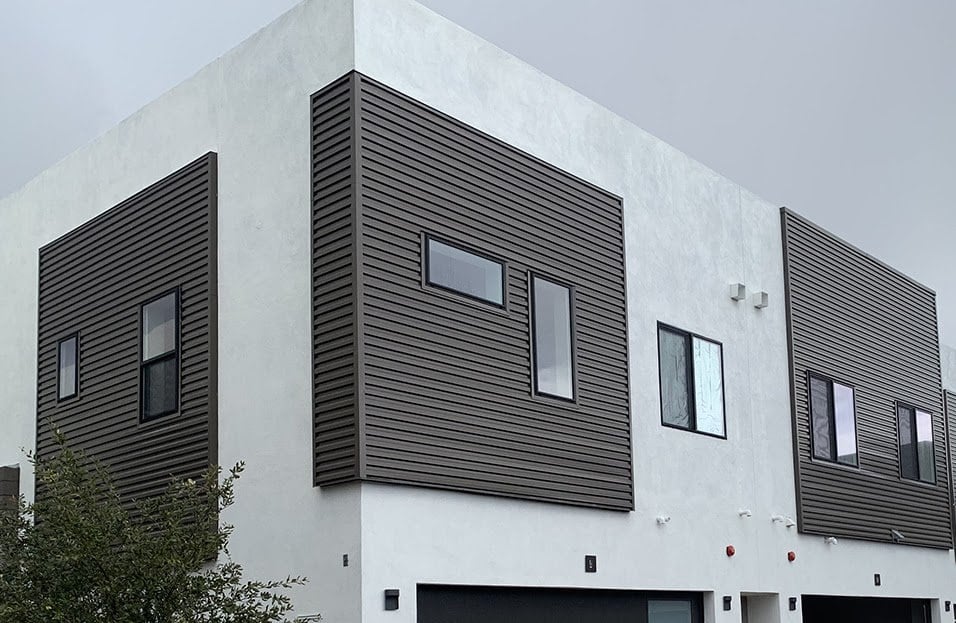The 5 Best Metal Siding And Wall Panels. And What You’ll Pay.
If you’ve been shopping for the right siding material for your home, you’ve probably noticed that there is a wide variety of options to choose from. So many that it could even be overwhelming.
Using metal for siding is one option that has become increasingly popular to use for home siding because of its long lifespan and its many other benefits. If you’ve already decided that you want to use metal for your siding, the next choice to make is what type of profile to use. This decision comes with a whole other set of options.
At Western States Metal Roofing, we manufacture metal siding panels in the most popular and sought after profiles that fit many different styles for residential, commercial, and agricultural design.
In this article, we go over the best metal profile panels to use for home siding, plus what you can expect to pay for each.
Before we get to that, you have to first understand the two types of fastener systems you’re going to encounter with metal panels: exposed fastener siding and concealed fastener siding.
What Is The Difference Between Exposed Fastener Siding Panels And Concealed Fastener Siding Panels?
The fastening system simply means how the metal panels are joined together. We’re going to discuss the pros and cons of both of the fastening systems.
Exposed fastener panels have fasteners that are visible on the surface of the panel. These panels are attached directly to the frame supports. These panels are more affordable and easier to install.
What Are The Pros Of Exposed Fastener Panels For Siding?
- Affordability- Exposed fastener panels are at least half the cost of concealed fastener panels.
- Easy installation- Installation is faster and requires less skill than the installation of concealed panels. It’s also easier for the homeowner to do the installation themselves or have a lower cost if hiring a professional installer.
What Are The Cons Of Exposed Fastener Panels For Siding?
- More Maintenance- You need to perform more frequent inspection to prevent panel failure. Fasteners should be checked to make sure they are not loose or broken.
- Less Weathertightness- Since fasteners penetrate the panel’s surface, they create small entry points for water to get through and leak into the wall causing moisture damage.
This is much less of a concern on a vertical metal siding panel as opposed to a roof because there is less water moving past the screw heads. A metal roof is sloped and the water will pass past, over, and around the screw head. This increases the likelihood of water penetration if a screw is fastened incorrectly, has become loosened, or the sealing washer has failed.
The majority of your moisture on a wall panel is from condensation and wind-driven rain. There just won’t be that much water getting past the screw head of the panel. Even if you have a loose or improperly fastened screw it’s not as critical as on a metal roof vs a metal wall panel.
Concealed fastener panels have hidden fasteners. They are inside interlocking panel joints which create a smooth, clean appearance and also protect the fasteners from the elements. These panels are more secure and weather-tight because of their method of installment.
What Are The Pros Of Concealed Fastener Panels For Siding?
- Contemporary Appearance- Hidden fasteners provide a sleek, clean appearance. The modern aesthetics of the panels make them often used in high-end real estate.
- More Weather-Tight- Metal wall panels that have a concealed fastener will be more weather-tight. The screw is concealed so it’s never exposed to the weather.
- Less Maintenance- Fewer inspections are required to check for loosened fasteners or failed sealing washers.
Although this is a big advantage it shouldn’t be your deciding factor on a wall application. This becomes more critical in a roofing application.
Using a high-quality synthetic underlayment will add an extra layer of protection between the wood substrate of your house and the metal siding panel. Even if a little bit of water gets through a loose screw head the underlayment will protect it from damaging the wood.
What Are The Cons Of Concealed Fastener Panels For Siding?
- More Expensive- Concealed fastener panels can be 2-3 times as much as exposed fastener panels.
- Longer Installation Time- The installation process is more complex, and requires more time and labor. Concealed fastener panel installation requires more effort and skill than the installation for an exposed fastener system. This means the installation costs for concealed are higher as well.
- More Trim And Flashing- Exposed fastener panels have simple flashing details that usually just require one piece of trim per wall condition. For example, an outside corner detail for a corrugated metal roofing panel is simply one piece of outside corner.
Concealed fastener metal siding panels will require multiple pieces for each trim detail. The same outside corner will now require three pieces of trim. This means the trim will cost about double and it will take about twice as long to install.
What’s The Best Metal Siding For Houses?
- ⅞” Corrugated
- R-Panel
- 7.2 Panel
- Flush Wall Panel
- Wave Panel
⅞” Corrugated Metal Siding
⅞” corrugated metal panels are our most popular siding panel profile. The exposed fastener system on this classic wave panel makes them easy to install and very DIY friendly. They are structurally strong, impact-resistant, install quickly, and a great choice for a low-cost metal siding.
They are also the most readily available metal panel and are carried at most home improvement stores.
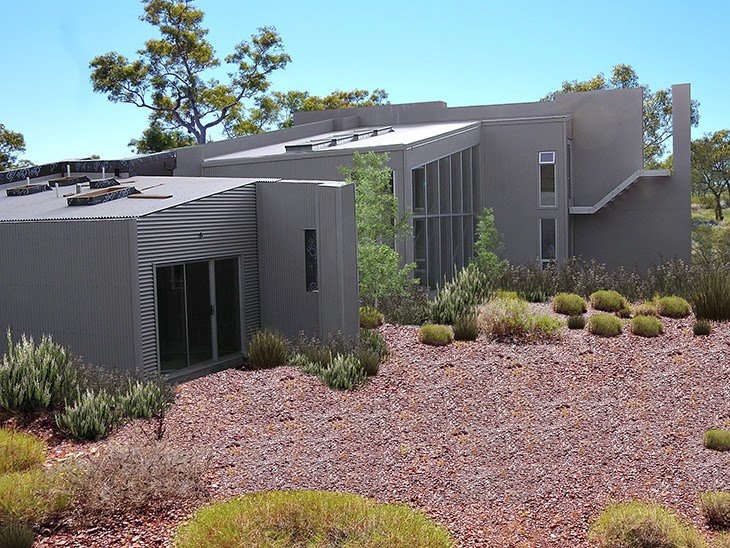
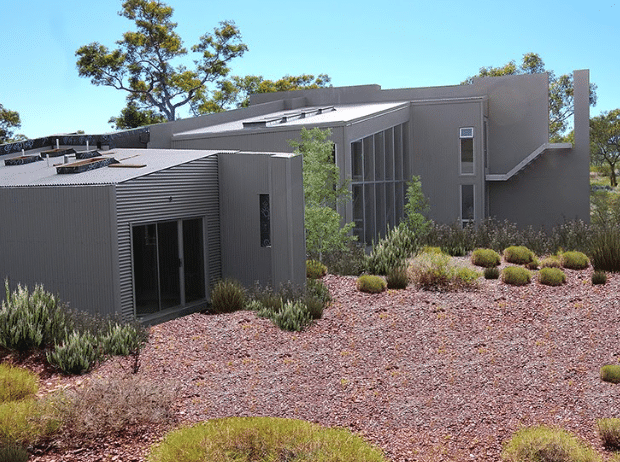
What Is The Cost Of ⅞” Corrugated Metal Siding?
⅞” corrugated ranges between $1.00 to $3.00 per square foot for material.
R-Panel
R-Panel is the metal panel with the lowest price tag. It’s an exposed fastener system with raised ribs and flat areas in between each rib. This gives you a boxy, more modern appearance.
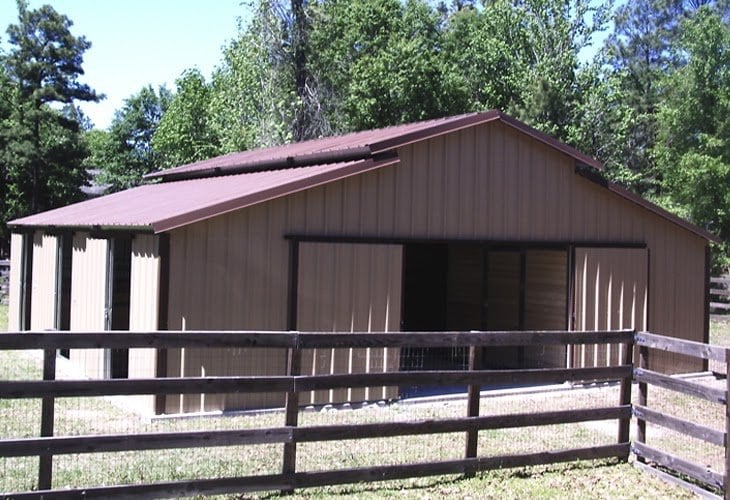
What Is The Cost Of R-Panel?
R-Panel siding will generally cost $1.00 - $3.00 per square foot for material.
If you are interested in exposed fastener panels because perhaps you want to do the installation yourself, the cost of R-Panel might be a deciding factor. R-Panel is about 15-20% less expensive than corrugated metal panels.
7.2 Panel
A 7.2 panel, also known as a structural box rib, is an exposed fastener panel that gets its name from having 7.2-inches of spacing between the ribs. These panels, such as the Western Rib®, offer a symmetrical balance that is aesthetically pleasing to all siding designs.
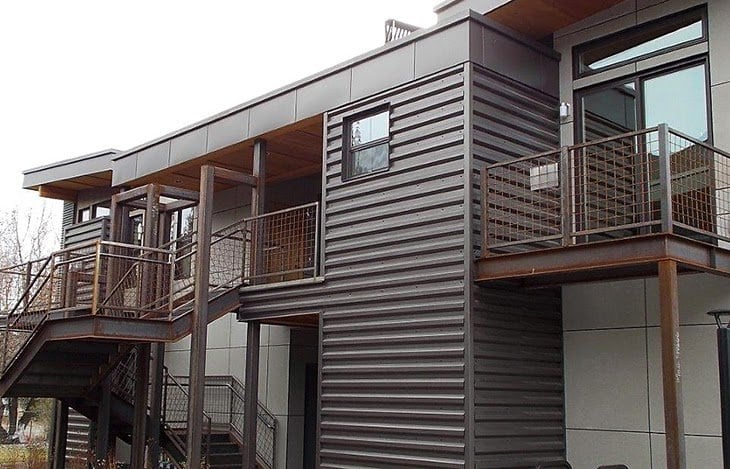
This is the strongest and most durable metal siding panel. The depth of the panel and their trapezoidal design provides superior strength, wind uplift, and span capacities.
What Is The Cost Of 7.2 Panels?
7.2 panels range between $1.00 to $3.00 per square foot for material.
Flush Wall Panel
While all the other siding panels on this list have a wavy or boxy shape to them, flush panels are designed for walls where a flat appearance is desired.
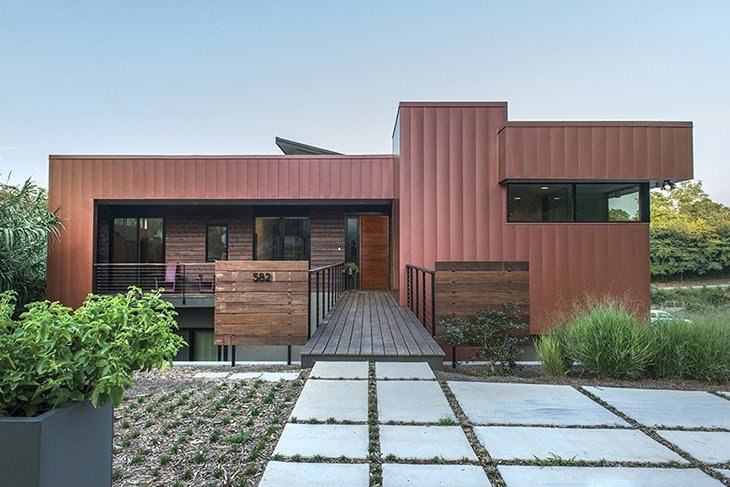
Flush wall panels, such as T-Groove®, are low profile, concealed fastener panels that are ideal for wall, soffit, and fascia applications.
Flush Wall Panel Spacing
Flush wall panels are also made with different reveals, or gaps, in between each panel. This look offers bold and clean directional sightlines that can be mixed and matched. Panels, such as Western Reveal®, offer different reveal sizes from anywhere from no reveal up to a 3” reveal.
Larger reveal sizes from 4” to 6” can be custom made but the price increases significantly as these panels will require more labor to produce. Flush wall panels with a 4”-6” reveal will also have a limit. The length depends upon the manufacturer, but is normally about 20’.
What Is The Cost Of Flush Wall Panels?
Flush wall panels range from $3.00-$5.00 per square foot. Specialty paint finishes could increase the price a bit.
Wave Panels For Walls
Wave metal wall panels are a concealed fastener system that gives you shadow effects that emphasize the panel's distinct rib profile. WAV panels, such as the Western Wave® panel, have a bold aesthetic that is excellent to use as an accent wall. They can be installed as a vertical or horizontal wall panel. It’s more common to see WAV panels used as just part of the siding as opposed to being used for the entire wall.
While they are more commonly used for commercial buildings, Wave panels are becoming increasingly popular as an accent for residential siding or stucco. They are available in thicker gauges such as 24-gauge making them a great choice if you are looking for a strong and durable panel for your home.
The biggest downside to Wave panels is that they cost about twice as much as a typical corrugated metal siding panel. They are also more difficult to install.
What Is The Cost Of WAV Panels?
The material cost alone of WAV metal wall panels is $3.00-$5.00 per square foot.
Which Metal Siding Panel Should I Choose For My Home?
There are a lot of factors to consider when choosing your siding. We have broken down the main priorities we find most customers are concerned with and which siding profile we think is best for that category.
If affordability is a top concern for you, we suggest using one of these options:
- R-Panel
- ⅞” Corrugated
- 7.2 Panel
If you are looking to do the siding installation yourself, we suggest using one of these options:
- ⅞” Corrugated
- R-Panel
- 7.2 Panel
If you are looking for a modern or contemporary appearance, we suggest using one of these options:
- Flush Wall Panels
- Wave Panels
If you are looking for less maintenance, we suggest using one of these options:
- Flush Wall Panels
- Wave Panels
How To Choose The Perfect Metal Siding
Once you have an idea of the panel profile you are going to use for your siding, your first step is to decide what gauge metal you are going to use. To help with that decision, we recommend reading:
What Gauge Should I Use For Metal Siding
You also have to choose a color for your siding. Click here to download our color charts.
You can also request a free color sample to see your favorite colors in person before you decide to order your siding.
Save Money On Your Metal Siding. Buy Directly From The Manufacturer
The cost estimates in this article should provide you with an estimate for the price of your new siding. You’ll find that you cannot get an exact price as each job is different.
The only way to know exactly what your project will cost is to speak with metal manufacturers and contractors and get a quote. If you don’t need guidance selecting the right materials for your siding, buying directly from manufacturers is the most affordable route.

